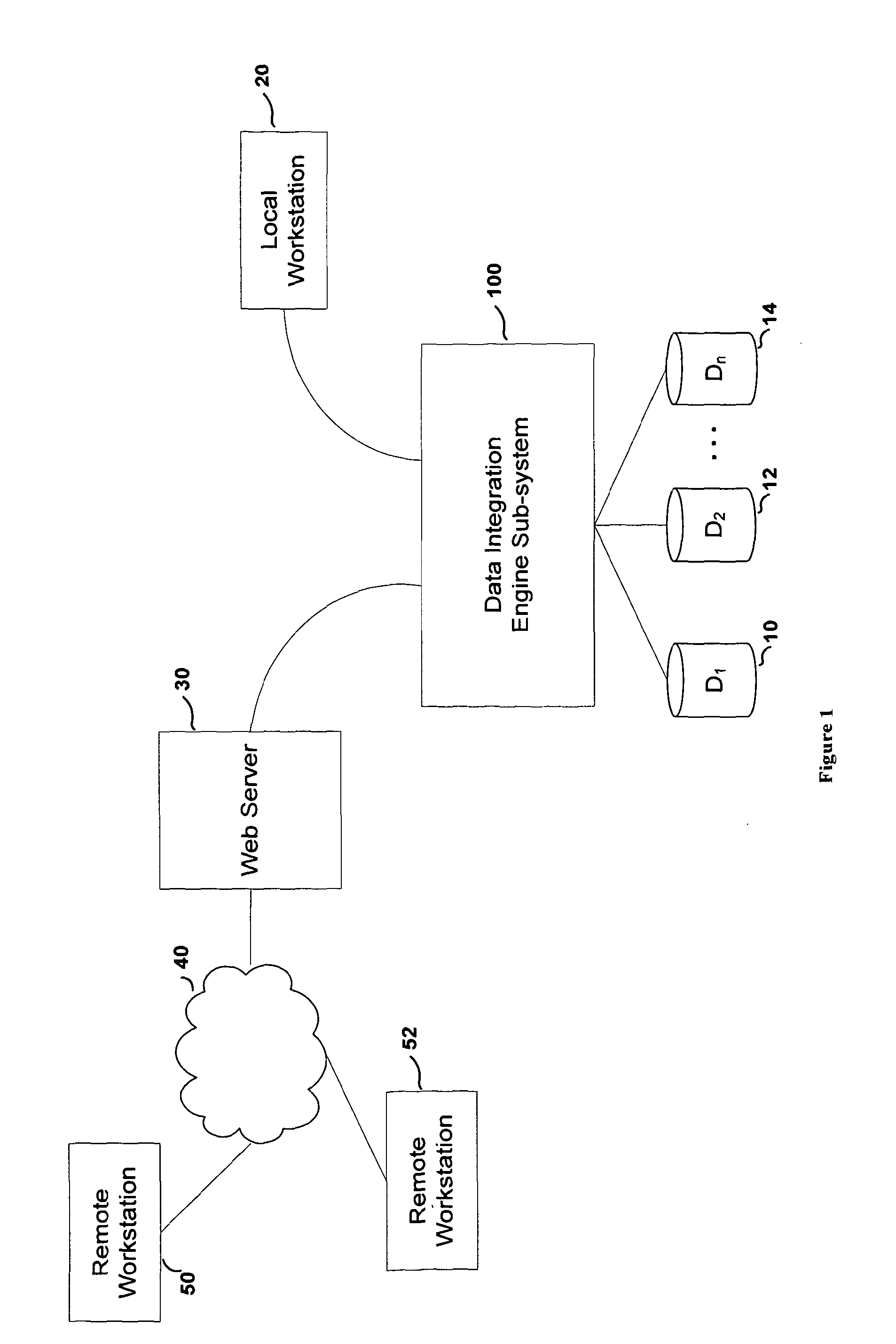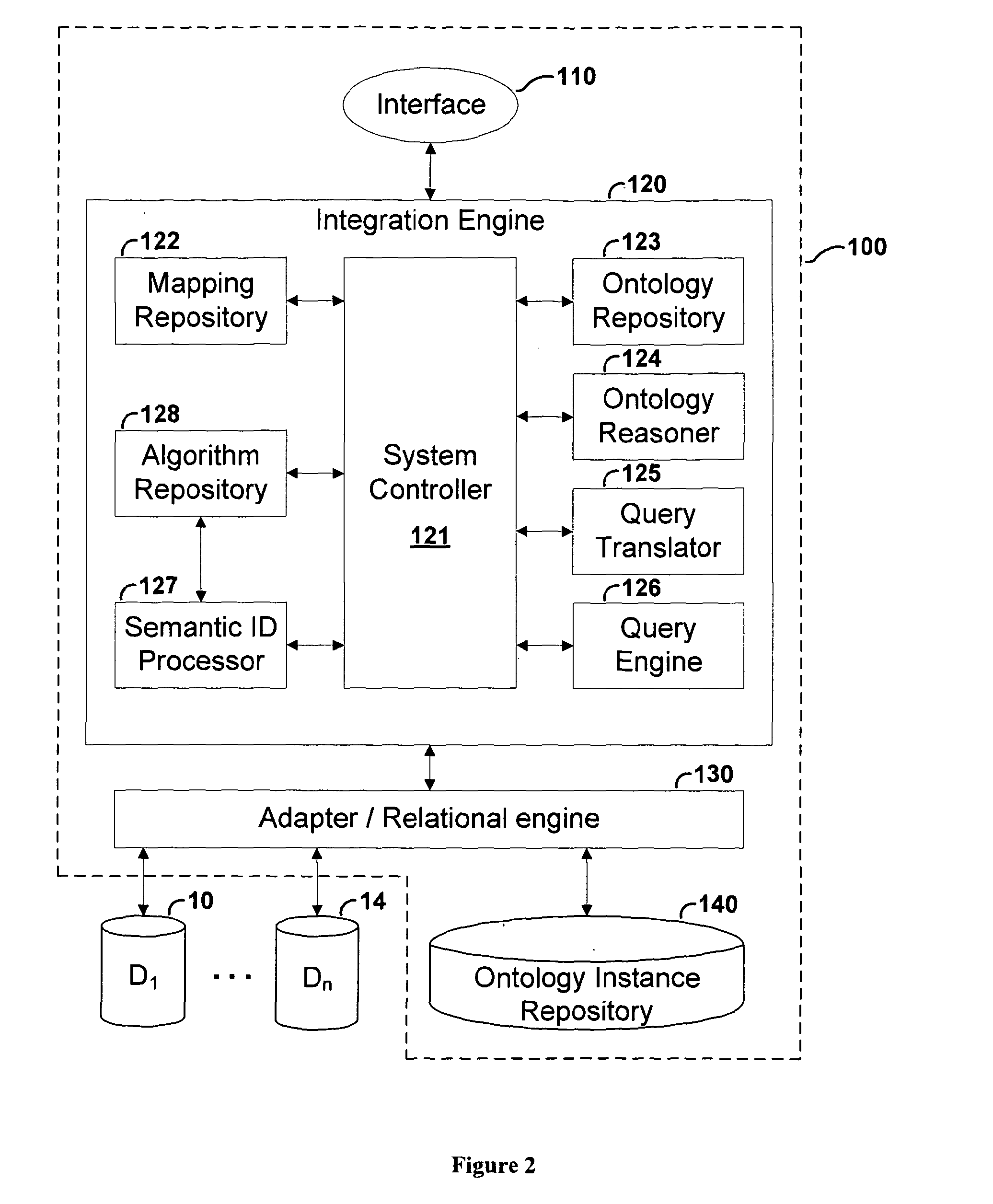Data integration system
a data integration and data technology, applied in the field of data integration systems, can solve the problems of data overload and information poverty, the difficulty of obtaining useful information from databases, and the inability to structure the many mappings such systems require,
- Summary
- Abstract
- Description
- Claims
- Application Information
AI Technical Summary
Benefits of technology
Problems solved by technology
Method used
Image
Examples
example 5
[0131]Having thus described in overview the structure and operation of the data integration system according to a preferred embodiment of the present invention with reference to FIGS. 1-3 and having described in detail the Schema Mapping, SM, including its development, employed by the present embodiment, there is now described an example query and its resolution with respect to an example set of underlying databases, an example global ontology and an example schema mapping. This fifth mapping example is illustrated in FIGS. 15-19.
[0132]As discussed above, the mapping M holds all of the information necessary to build an ontology A-Box, stored in relational form as a database, in response to an appropriate query. Referring now to FIG. 3 again as well as to FIGS. 15-19, the main purpose of the DIS of the present embodiment is query execution, in order to retrieve semantically fused information, and optionally to additionally perform reasoning to derive implicit knowledge (i.e. knowledg...
PUM
 Login to View More
Login to View More Abstract
Description
Claims
Application Information
 Login to View More
Login to View More - R&D
- Intellectual Property
- Life Sciences
- Materials
- Tech Scout
- Unparalleled Data Quality
- Higher Quality Content
- 60% Fewer Hallucinations
Browse by: Latest US Patents, China's latest patents, Technical Efficacy Thesaurus, Application Domain, Technology Topic, Popular Technical Reports.
© 2025 PatSnap. All rights reserved.Legal|Privacy policy|Modern Slavery Act Transparency Statement|Sitemap|About US| Contact US: help@patsnap.com



